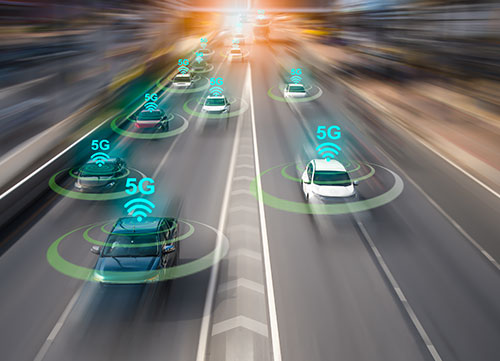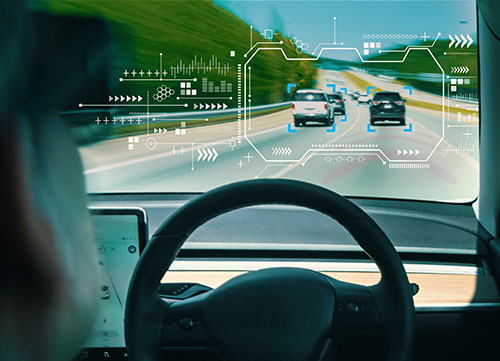
Despite the current challenges COVID-19 presents, these are exciting times for fleet businesses, with one recent study predicting a growth in value from £15.86 billion in 2020 to an enormous £25.78 billion by 2025.
Much of the growth is set to be driven by new next-gen fleet technology that promises to make every aspect of operating a fleet smarter, safer and more efficient than ever before.
With that in mind, here are our predictions on what to expect from next generation fleet technology.
Often abbreviated as C-V2X, Cellular Vehicle-To-Everything technology will be at the heart of next-gen fleet systems.
This cellular technology allows vehicles to connect to each other, as well as roadside infrastructure, other drivers, and of course the cloud-based services that feed them data. From optimal route planning to reduction in congestion and carbon emissions, advancements in C-V2X will make everything else on this list possible, and forward-thinking fleet owners are sure to reap the benefits.

One of the core technologies that will enable the evolution of C-V2X is 5G, which can be up to 100 times faster than 4G, and allow up to 100 times more devices to connect at any one time.
The benefits for fleets will be huge. More 5G-enabled vehicles connected to a network will mean more ways to track and optimise every aspect of the way a fleet business runs.
Also, because 5G is that much faster, it will help businesses and drivers alike stay agile. Fleet managers will be able to use increasingly accurate data to lower fuel consumption costs across their business. Sensor data will help drivers overtake more safely and avoid roadside collisions. From HQ to cab, the rollout of 5G should see the entire experience of working for a fleet change for the better.
Such detailed vehicle tracking, of course, falls into the area of telematics – a subject we’ve recently covered in detail. However, the combined one-two punch of C-V2X and 5G is guaranteed to have enormous ramifications for advancements in this area.
Current telematics systems already track vehicle location, driver ID and schedule, and can even be used to inform driver training. But more well-connected vehicles, running on a more data-efficient network, will allow for some true next-gen leaps in what telematics can deliver.
Imagine increasingly sophisticated fleet management software that includes voice integration capabilities so drivers and fleet managers can actually talk to the system to get updates in real time. Not only that, but those at both ends of the supply chain could also be looped in. That would mean, for instance, that a depot expecting a collection or a customer expecting a delivery could enjoy more transparency than ever; drastically improving both supplier relations and the customer experience.
While telematics systems are already becoming commonplace, advances in AI promise to give them a whole new level of split-second prediction and decision-making.
One particular example in this area could include real-time analysis and reaction to weather patterns. Imagine an AI responding to an incoming storm, predicting the impact on traffic (for example, the probability of downed trees blocking the road), suggesting a new route simultaneously to both driver and fleet command, and automatically connecting them by hands-free audio to agree the change.
AI could have even greater impacts across the wider fleet industry too. From data-driven prediction helping fleet managers, mechanics and drivers to prevent risks, to facial recognition systems preventing vehicle theft, the applications are endless.

One of the most sci-fi style applications might also be closer than you think. While the rollout of true driverless cars might still be some way off, there might be another four levels of vehicle automation that fleet managers can take advantage of to help their drivers in the next few years.
As you can see, we have a long way to go before the humble job of delivery driver becomes a thing of the past!
The societal shift towards smarter, more connected vehicles will also see a strengthened resolve for transport of all kinds to go greener.
Expect a general increase in the number of hybrid and full EVs – along with innovative ways to charge them, including e-Lanes that induction charge your car battery as you drive on them.
With the UK committing to reduce greenhouse gas emissions by 100% of 1990 levels by 2050, you’ll want to factor EVs into your business’ longer-term strategy over the next decade and beyond.
Looking to modernise your fleet but not sure where to start? Get in touch – we’ll be happy to talk it through with you. You can call us on 0344 854 5100, or email CSalmon@sgfleet.com.